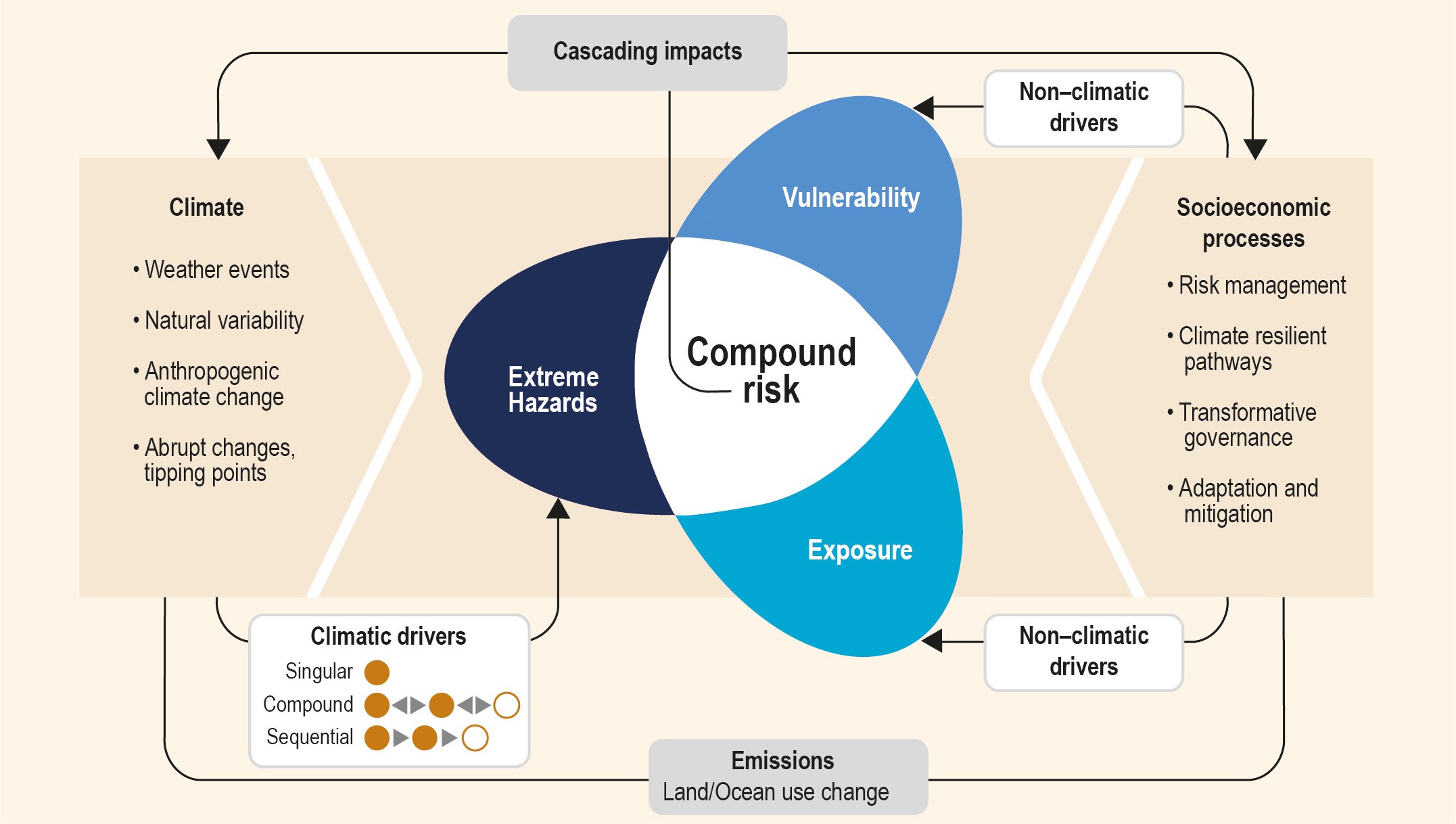
Figure 6.1
Figure 6.1 | Framework used in this chapter (see discussion in Chapter 1). Singular or multiple climate drivers can lead to extreme hazards and associated cascading impacts, which combined with non-climatic drivers affect exposure and vulnerability, leading to compound risks. Extremes discussed are tropical cyclones (TCs) and extratropical cyclones (ETCs) and associated sea surface dynamics (Section 6.3); marine heatwaves (MHWs) (Section 6.4), extreme El Niño and La Niña events (Section 6.5); and extreme oceanic decadal variability (Section 6.6). Examples of abrupt events, irreversibility and tipping points discussed are the Atlantic Meridional Overturning Circulation (AMOC) and subpolar gyre (SPG) system (Section 6.7). Section 6.2 also collects examples of such events from the rest of the Special Report on the Oceans and Cryosphere in a Changing Climate (SROCC) and compiles examples of events whose occurrence or severity has been linked to climate change. Cascading impacts and compound events are discussed in Section 6.8 and three examples are given in Box 6.1. Section 6.9 discusses risk management, climate resilience pathways, transformative governance adaptation and mitigation required to address societal and environmental risks.